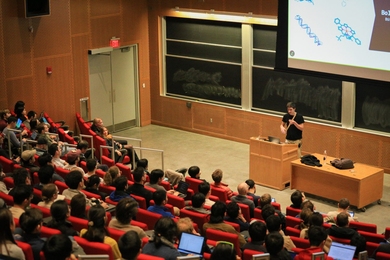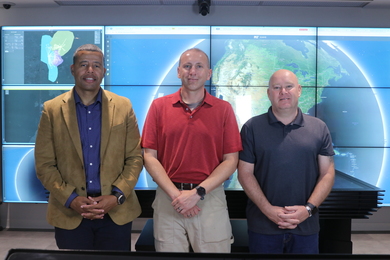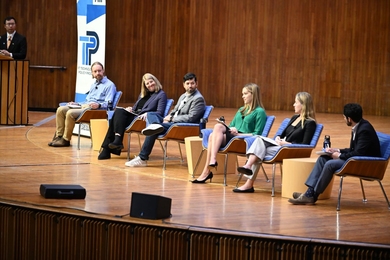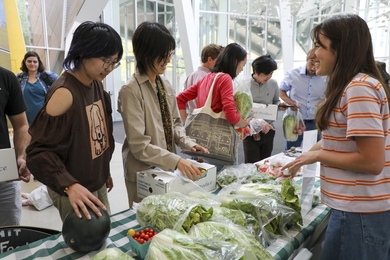Thanks to a new student-designed arts program, a group of incoming freshmen will arrive on campus early to explore their creative sides -- and that of MIT.
From August 20-24, 40 members of the Class of 2003 will take part in the Freshman Arts Program (FAP), MIT's first-ever pre-orientation program in the arts, designed to introduce entering students to the MIT arts community and the cultural opportunities in Boston and Cambridge.
The Freshman Arts Program is conceived, developed and staffed entirely by current MIT students who hope to acquaint the incoming students ("prefrosh") with "the wealth of arts opportunities MIT has to offer" and help them meet and exchange ideas with fellow MIT students who share a love for the arts. Funded in part by grants from Motorola, Inc. and Morgan Stanley, the program will offer workshops in subjects ranging from a cappella singing to video production and African dance to paper making, all led by artists from MIT and the Cambridge/Boston area.
Off-campus field trips will include visits to Boston's Museum of Fine Arts, the Arnold Arboretum and architecture tours of Boston and Cambridge. Incoming freshmen were selected for the program by application.
"By introducing arts-inclined freshmen to each other early on, the program will provide a network of artists across campus who could seed interest in the arts in their various dorms, living groups and social circles," said Matthew Norwood, a graduate student in electrical engineering and computer science and one of four student coordinators for the program.
Mr. Norwood, who was active in theater as an undergraduate at MIT, also hopes that the program will "give freshmen a chance to see the breadth of artistic opportunities at MIT right off the bat, preventing the kind of late-blooming artistic interest which seems prevalent among undergraduates here."
"It's a great chance to meet arts-interested people in an environment that's overall technical," said entering freshman Sloan Kulper of Morris Plains, NJ, who was accepted into the FAP and wants to continue his high school endeavors in playwriting, directing and creative writing while at MIT. "My major goal is to meet early on as many people as I can who have similar interests in the arts as I can [without] having to search them out after school begins."
BUILDING ARTS COMMUNITIES
The Freshman Arts Program is the latest of a series of initiatives designed to encourage MIT undergraduates -- most of whom will go on to careers in engineering and science -- to nurture their creative and artistic interests while at the Institute. Last year marked the advent of the MIT Arts Scholars Program, which, through informal monthly dinners and excursions, aims to help undergraduate artists at MIT connect with each other while fostering a sense of community among them.
"Many students come to MIT without knowing about the rich and varied resources that the Institute has to offer for the pursuit of serious creative work outside the fields of engineering and science," said Associate Provost for the Arts Alan Brody. Dr. Brody, an award-winning playwright who will hold a play-writing workshop for FAP participants, feels the program will "give freshmen the opportunity to start early, to develop further and to make the arts an integral part of their entire education here. It's one of those student initiatives that make working at MIT such a joy."
Initiated and implemented by Elsie Huang, who will be a senior in architecture, the FAP is now one of five pre-orientation programs at MIT. Others are the Freshman Outdoors Program (a collaboration with Outward Bound on Thompson Island), the Freshmen Leadership Program, the Freshmen Service Program and Discover Ocean Engineering.
Elizabeth Cogliano-Young, director of orientation and coordinator of student programs in the Office of Academic Services, said she was delighted to approve and authorize FAP when approached by Ms. Huang. "I've been involved since the beginning, but it's the students who have planned the program," she said.
A version of this article appeared in the September 11, 1999 issue of MIT Tech Talk (Volume 44, Number 2).





